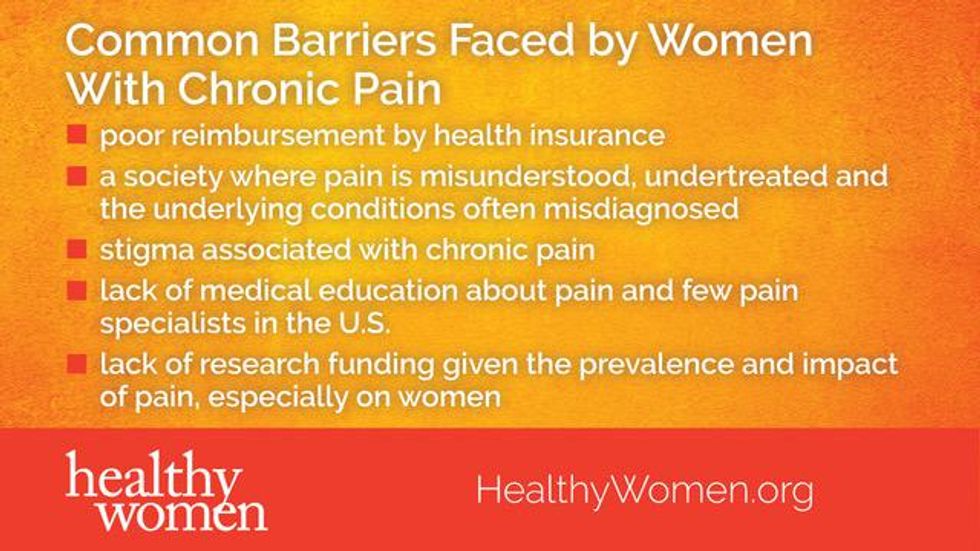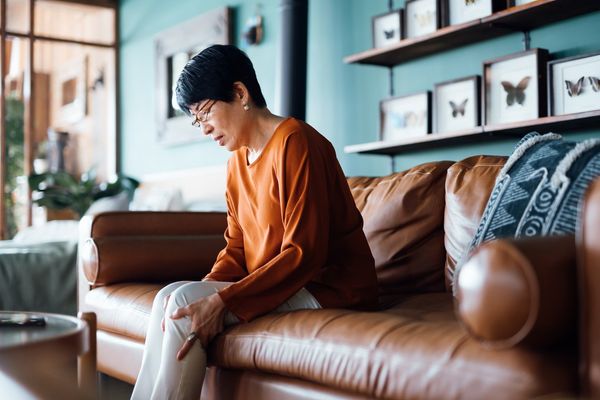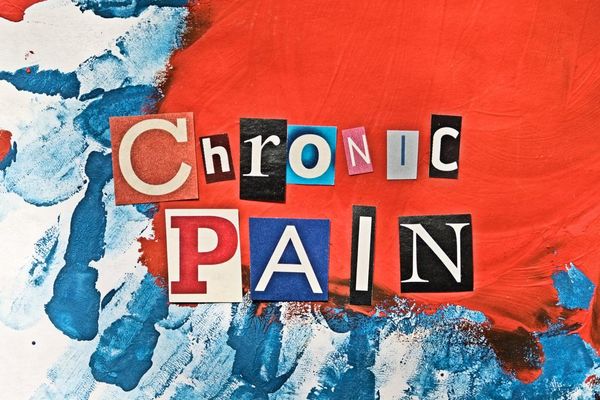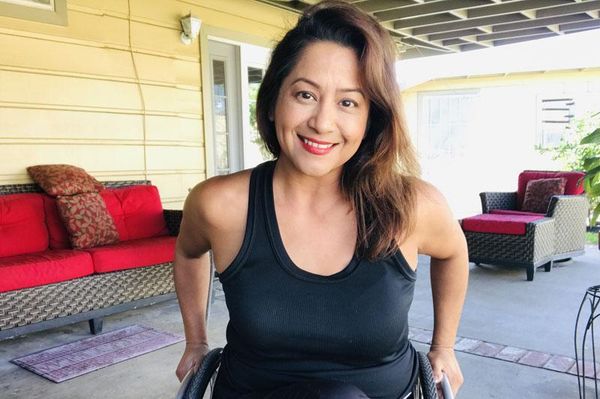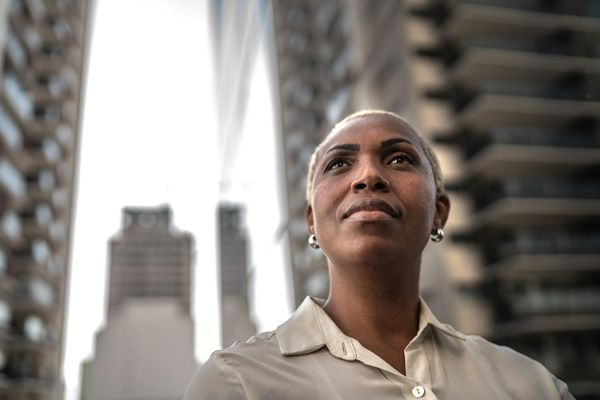Kate Nicholson, a civil rights and disability rights attorney based in Boulder, Colorado, has lived with chronic pain for more than 20 years. Here, she offers insight for overcoming common barriers that prevent women with chronic pain from getting care or moving forward with their lives or both.
You've written about resilience. Can it really help women with chronic pain overcome barriers?
We can all build resilience, but our circumstances are not all the same. Some women face more barriers than others. The common barriers we all face include:
- Poor reimbursement by health insurance for many pain treatments
- A society where pain is undertreated, and the conditions causing it are often misdiagnosed
- Stigma associated with chronic pain
- The lack of medical education about pain
- The lack of pain specialists in the U.S.
- The lack of research funding compared with pain's prevalence and its impact, especially on women, among so many other obstacles
I discovered this world of barriers in 1994 after a surgical injury to my spine caused severe pain, and I was unable to sit, stand or walk more than a couple of feet with a walker for the next 15 years. I basically had to navigate the world lying down.
"Resilience" is often defined as the capacity to recover from difficulties—having a certain toughness. When you have chronic pain, it is less about recovering and more about adapting to new circumstances, because the pain persists; it is ongoing or continuous. Perhaps the definition of resilience as "springing back into shape" or "elasticity" is a better fit. All of us have the capacity for resilience, and tapping this resilience can help us move forward.
To me, resilience is the ability to adapt and thrive despite ongoing and difficult circumstances. For example, figuring out how to continue to do my job when I could only lie down enabled me to continue to pursue my interests and have an income, although I couldn't do things in the same way or participate in work that required travel.
It's a fact that resilience in our society is mostly about resources. Women with good medical care, a job that offers a living wage and access to sick leave fare better—whether the difficulty is coping with an inadequate health care system or recovering from the impact of a natural disaster, for example. This matters because resilience is partly about our inner reserves and partly about what comes to us from the outside in terms of both resources and difficult experiences.
Trauma occurs when difficult experiences overwhelm our inner reserves. If we have more resources, the difficult experience may not overwhelm us. Regardless of our circumstances, cultivating resilience can help us buttress those inner reserves.
How can I harness resilience?
First, focus on those things you can control. Chronic pain is difficult because it endures; it can feel like it has always been and will never end. Taking things a day or even a moment or an hour at a time can really help because the pain intensity is rarely exactly the same at every moment. Seize moments that give you an opening to do something that feels useful; often, those moments can accumulate. If you are having an especially grueling period, give yourself permission not to be productive and be kind and gentle with yourself.
Second, use any social and cultural resources available to you. They provide emotional buffers. Pain is an assault on intimacy. You may not be able to participate in shared social activities, and your family and friends can't see or experience what you do. Chronic pain can separate us from others. But we have to find ways to cultivate this needed connection. Early in my pain experience, I found it helpful for my friends to sit with me and describe their vibrant hiking and camping experiences—the activities that once were such a big part of my life. When I was bedridden, I would sometimes virtually accompany friends to dinner or small parties or even join via cell phone while my friends ran errands or went through the ordinary tasks of their days.
I've tried numerous techniques over the years that helped, including meditation and relaxation therapy, journaling, drawing and deeply taking in fine art. Resilience can show up unexpectedly. For example, when I started to draw, I barely had the energy to put pen to paper. Then, I noticed that sketching helped me focus outside of myself and awakened different parts of my brain. An entirely new reserve of energy surfaced. Looking at art on the thousands of museum websites that have their collections online opened up new worlds to me, while not requiring the focus of reading an entire novel or watching a play.
Third, don't expect too much of yourself. The only way to be resilient is to accept the new normal and your current capabilities. We can't expect to do all the same things in the same ways that we did before chronic pain. If your work life is challenging, consider asking your employer for accommodations. Under the Americans with Disability Act, employers are required to make appropriate accommodations for you. You can ask to telework or request projects that are less deadline-intensive when you are in a flare-up. If you can afford it, consider a part-time or flexible schedule when things are especially difficult. Whether these accommodations will be provided will depend on your employer's circumstances too—such as how large and well-resourced they are.
I was fortunate because I worked in the Civil Rights Division at the Department of Justice when my pain began—the office that enforces the Americans with Disabilities Act—so they were especially accommodating to me.
And, reach out: Ask for help. Resilience isn't about going it alone. When things get rough, I try and focus on these five concepts:
- Pleasure. Find what makes you feel good and hold on to it.
- Patience. Pain is an endurance test, so it is really important to be patient with yourself.
- Perseverance. Find a way to reach out to others, to make and sustain social contacts.
- Pause. Take time out when you need to rest, and try and find those things that give you a sense of relaxation and stillness.
- Perspective. Even with the most intractable chronic condition, there are always ebbs and flows. Holding on to the times that are better and remembering them is important, so you don't feel like you're just stuck in an unrelenting rut.
This resource was created with support from Pfizer.


